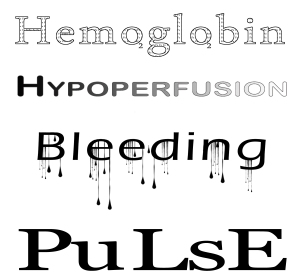There are many factors to providing critical prehospital care. EMTs must gain the skills necessary to quickly determine if a patient is in immediate need of advanced care. I wanted the design of the critical care page to be comprehensive, yet clean. As students enter their practical skills, they need to easily remember the information presented. There is a lot to remember in this section, so the design demands that a lot of information is concentrated in each section. I enhanced the text with contrasting colors for cohesiveness, but the sheer volume of text still needed something more to make the steps more concrete. Because a picture is worth a thousand words, I am seeking representative images to further solidify the different steps.
References
Lohr, L. (2008). Creating graphics for learning and performance: Lessons in visual literacy. (Second.) Upper Saddle River, NJ: Pearson Education, Inc.
Archive for 2.1 Print Technologies
EDTECH 506: CARP is not a fish
CARP design elements are used to better communicate a lesson or message through visual representation. Contrast. Alignment. Repetition. Proximity. Each of these elements impacts learning, and a good design will improve the course content. I chose grey-scale for my design, planning a contrast punch with black and white text and graphics. I chose the organized feel of rectangle shapes and symmetrical rows and columns they create, while using repetition to lighten the tense lines in the image. Each row a different color, but the proximity of clone like text boxes reveals the concepts therein are connected. In the end, I’m pleased with that decision feeling like I have met the first course goal – “to apply principles of visual literacy o the design of instructional messages.”
EDTECH 504: Setting the course
It is ironical that life’s constants are chaos and strife. We humans must constantly adapt to change in an attempt to better future generations. In the past two weeks I attended a state-level competitive event for a student organization with six energetic adolescents, replaced a server, and analyzed volumes of raw data for errors in an attempt to improve our state’s reporting system. Not to mention the myriad activities performed at home as a week-end wife of my studious husband who is attending nursing school in a brick-and-mortar institution two hours north, and week-long mother of my ambitious high school freshman. It’s no small wonder clichés such as “pushing through walls” and “climbing ladders of success” pepper our vernacular.
Amid that race, I had the opportunity to stop, regroup, and refocus with what I thought would be a routine assignment. I haven’t performed an annotated bibliography since I earned my first master’s degree a dozen years’ past. What topic to select? I stewed on it until the due date loomed like a house rock in the middle of the boiling rapids. Of course! My reasoning behind this degree is to be able to help others in their struggle to change. As a professional technical educator with multiple academic endorsements and an accidental tourist in the IT department, I know a lot about educational theory, teaching in a classroom, IT issues, and design techniques but I don’t know much about the unique climate of the very population I want to serve.
I spent all afternoon with my research, growing more excited with my topic as I read and summarized. Ideas poured forth and began to pool together. Before I knew it, the project was complete. Despite a ten hour stretch of reading, I felt refreshed and motivated. I’m ready to take on the adventure of a research project on this topic and change my world.

